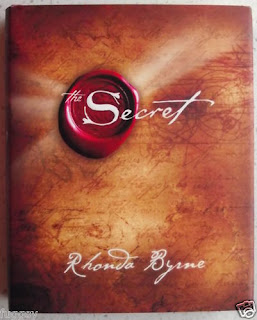Ten Best China Books of All Time
China's state-run General Administration of Press and Publication screens all Chinese literature intended to be sold on the open market. The GAPP has the legal authority to screen, censor, and ban any print, electronic, or Internet publication in China. Because all publishers in China are required to be licensed by the GAPP, that agency also has the power to deny people the right to publish, and completely shut down any publisher who fails to follow its dictates. As a result, the ratio of official to pirated books is said to be 2:3. According to a report in ZonaEuropa, there are more than 4,000 underground publishing factories around China. The Chinese government continues to hold public book burnings on unapproved yet popular 'spiritual pollution' literature, though critics claim this spotlight on individual titles only helps fuel booksales. Many new-generation Chinese authors who were the recipients of such government attention have been re-published in English and success in the western literary markets, namely Zhou Weihui's Shanghai Baby, Anchee Min's controversial memoir Red Azalea, Time Magazine banned-book covergirl Chun Sue's Beijing Doll, and Mian Mian's Candy. Online bestseller Ghost Blows Out the Light had to be rewritten to remove references to the supernatural before it could be released in print.
In the new millennium, online literature in China plays a much more important role than in the States or in the rest of the world. Almost any book is available online, novels finding millions of readers, being available at 2 Yuan in average, a tenth of the average prize of a printed book.
The book market in China traditionally orders Chinese books during bookfairs, because the country lacks a national book ordering system. In 2006, 6.8 million titles were sold, not including an unknown number of banned titles, bootleg copies and underground publishing factories. Seven percent of all publishers are located in Shanghai. Because the industry lacks a national distribution system, many titles from publishers in the provinces can only be found there.
The central publishing houses belonging to ministries or government institutions have their main seat at Beijing (40 percent of all publishers). Most regional publishing houses are situated in the capitals of the provinces. Universities also have associated presses. Private publishing is tolerated. 220,000 books were published in 2005. Among 579 publishers – almost five times more than thirty years ago – 225 are supervised by ministries, commissions or the army; 348 are controlled by agencies; and six are even more independent. On the other hand 100,000 private bookstores bring in the half of the income of the book industry.
According to The Guardian, the cultural life of the 1.3 billion people who live and work in this economic superpower remains a closed book to many in the west – their bestselling authors unfamiliar, their most exciting writers untranslated. However, in 2005, the Chinese government started a sponsoring program for translations of government-approved Chinese books, which has already resulted in more than 200 books being translated from Chinese into another language.
1)
The Good Earth by Pearl Buck
The Good Earth is a novel by Pearl S. Buck published in 1931 and awarded the Pulitzer Prize for the Novel in 1932. The best selling novel in the United States in both 1931 and 1932, it was an influential factor in Buck winning the Nobel Prize for Literature in 1938. It is the first book in a trilogy that includes Sons (1932) and A House Divided (1935). The novel of family life in a Chinese village before the 1949 Revolution was a best-seller in both 1931 and 1932 and has been a steady favorite ever since. In 2004, the book was returned to the best seller list when chosen by the television host Oprah Winfrey for Oprah\'s Book Club. The novel helped prepare Americans of the 1930s to consider Chinese as allies in the coming war with Japan.
2)
Journey to the West by Wu Cheng'en
Journey to the West is one of the Four Great Classical Novels of Chinese literature. Originally published anonymously in the 1590s during the Ming Dynasty, its authorship has been ascribed to the scholar Wu Cheng\'en since the 20th century. The novel is a fictionalised account of the legendary pilgrimage to India of the Buddhist monk Xuanzang. The monk travelled to the 'Western Regions' during the Tang dynasty, to obtain sacred texts (sūtras). The Bodhisattva Guan Yin, on instruction from the Buddha, gives this task to the monk and his three protectors in the form of disciples — namely Sun Wukong, Zhu Bajie and Sha Wujing — together with a dragon prince who acts as Xuanzang's steed, a white horse. These four characters have agreed to help Xuanzang as an atonement for past sins.
3)
Dream of the Red Chamber by Cao Xueqin
Dream of the Red Chamber, composed by Cao Xueqin, is one of China's Four Great Classical Novels. It was composed sometime in the middle of the 18th century during the Qing Dynasty. It is a masterpiece of Chinese vernacular literature and is generally acknowledged to be the pinnacle of classical Chinese novels. Red Chamber is believed to be semi-autobiographical, mirroring the fortunes of author Cao Xueqin's own family. As the author details in the first chapter, it is intended to be a memorial to the women he knew in his youth: friends, relatives and servants. The novel is remarkable not only for its huge cast of characters and psychological scope, but also for its precise and detailed observation of the life and social structures typical of 18th-century Chinese aristocracy.
4)
Wild Swans by Jung Chang
Wild Swans: Three Daughters of China is an autobiographical family history by Chinese writer Jung Chang. First published in 1991, Wild Swans contains a biography of the three female generations of Chang's family: her grandmother, her mother and finally her own autobiography. The book won two awards: the 1992 NCR Book Award and the 1993 British Book of the Year. The book has been translated into 30 languages and sold over 10 million copies. Wild Swans is banned in mainland China, though two pirated versions are available, as are translations in Hong Kong and Taiwan.
5)
The Joy Luck Club by Amy Tan
The Joy Luck Club is a best-selling novel written by Amy Tan in 1989. It focuses on four Chinese American immigrant families in San Francisco, California who start a club known as 'the Joy Luck Club,' playing the Chinese game of mahjong for money while feasting on a variety of foods. The book is structured somewhat like a mahjong game, with four parts divided into four sections to create sixteen chapters. The three mothers and four daughters (one mother, Suyuan Woo, dies before the novel opens) share stories about their lives in the form of vignettes. Each part is preceded by a parable relating to the game. In 1993, the novel was adapted into a feature film directed by Wayne Wang and starring Ming-Na.
6)
Snow Flower and the Secret Fan by Lisa See
Snow Flower and the Secret Fan is a 2005 novel by Lisa See set in nineteenth century China. Lily at 80 reflects on her life, beginning with her daughter days in 19th-century rural China. Foot-binding was practiced by all but the poorest families, and the graphic descriptions of it are not for the fainthearted. Yet women had nu shu, their own secret language. At the instigation of a matchmaker, Lily and Snow Flower, a girl from a larger town and supposedly from a well-connected, wealthy family, become laotong, bound together for life. Even after Lily learns that Snow Flower is not from a better family, even when Lily marries above her and Snow Flower beneath her, they remain close, exchanging nu shu written on a fan.
7)
Red Azalea by Anchee Min
Red Azalea is the memoir of Chinese American writer Anchee Min (b. 1957). It was written during the first eight years she spent in the United States, from 1984 to 1992, and tells the story of her life in China. This is an honest and frightening memoir of growing up in Communist China during the Cultural Revolution of the 1960s and 1970s. Min describes a systematically deprived Shanghai childhood (the family was forced into successively meaner quarters); school days spent as a member of the Red Guard, spouting the words of Chairman Mao and being forced to publicly betray her favorite teacher; and later teen years on a work farm in order to become a peasant because peasants were the only true vanguard of the revolution. The farm years, with their backbreaking workdays and heartbreaking, lonely nights, exemplify the grinding insanity of the Cultural Revolution.
8)
Life and Death in Shanghai by Nien Cheng
Life and Death in Shanghai is an autobiography published in November 1987 by Nien Cheng from exile in the United States which details Cheng\'s six-year imprisonment during the Cultural Revolution. The book tells the story of Cheng's arrest during the first days of the Cultural Revolution, her imprisonment, release, persecution, efforts to leave China, and early life in exile. Cheng was arrested in late 1966 after Red Guards looted her home. During her imprisonment, she was pressured to make a false confession that she was a spy for 'the imperialists' because for many years after the death of her husband she had continued to work as a senior partner for Shell in Shanghai. Cheng refused to provide a false confession, and was tortured as a result.
9)
CHINA: Portrait of a People by Tom Carter
There are more than 1.3 billion people in China. Besides the majority Han Chinese, the population includes 56 ethnic groups numbering over one hundred million. Over the course of 2 years and 35,000 miles, photojournalist Tom Carter captured it ALL on film. Carter's anthropological-like study of China stands apart in its genre, as it focuses expressly on the PEOPLE of China. In addition to documenting the everyday life of 'ordinary' people, Carter also backpacked to the most remote areas of China to observe reclusive ethnic minorities. From Inner Mongolian nomads to newlyweds in Hong Kong, from the teenage girl living in Chengdu dressed like an American punk rocker to the soot covered coal miner in Southern Shanxi, Carter's camera documented the complexity and diversity of China like no other book ever has.
10)
River Town by Peter Hessler
In 1996, 26-year-old Peter Hessler arrived in Fuling, a town on China\'s Yangtze River, to begin a two-year Peace Corps stint as a teacher at the local college. Along with another teacher, the two are the first foreigners to be in this part of the Sichuan province for 50 years. Expecting a calm couple of years, Hessler at first does not realize the social, cultural, and personal implications of being thrust into a such radically different society. In River Town: Two Years on the Yangtze, Hessler tells of his experience with the citizens of Fuling, the political and historical climate, and the feel of the city itself.
Article Source:
http://www.articlesbase.com/literature-articles/ten-best-china-books-of-all-time-4877584.html
























